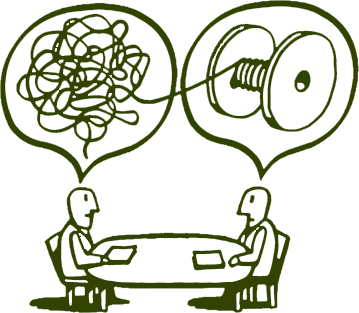The Ultimate Guide To Exponential Coaching
5 Key Elements to Create Dramatic Results for Clients and Establish Your Reputation as a Powerful, Impactful Coach

exponential
/ˌɛkspəˈnɛnʃ(ə)l/
Every single coach on the planet wants to create exponential transformations for their clients.
You want exponential impact.
You want exponential success.
You want exponential results.
The chase to get to "the exponential level" is real but for most coaches, it remains out of reach because the key elements to exponential coaching are not in place.
If you want to become a powerful, impactful coach, you need to understand these elements, then you need to practice and implement them in every single coaching session...
And that's what this Ultimate Guide is about.
Think of this as your foundational path to becoming an exponential coach...
The kind of coach who has the power, focus, discipline, and skills to create extraordinary results for clients.
The 5 key exponential elements in this Guide are based on the teachings of Master High-Performance Coach Rich Litvin.
Rich is a legend and a visionary in the coaching world.
His clients include Olympic athletes, Navy Seals and Presidential Candidates and he is the founder of 4PC - The Four Percent Club -which is a private club for the top 4% of the world's consultants and coaches.
Rich knows exactly what it takes to get clients to 10x their results and these 5 elements are at the core of his coaching methodology.
Here's the thing...
Exponential isn't just an exciting buzzword.

Exponential is a manifesto, a mantra... a way of life.
When you start to take serious action and consistently implement these elements in your work with clients...
You will start to become an exponential coach.
This isn't an "if" or "maybe" kind of deal.
It's a certainty.
Ready for it? Let's roll.
CHAPTER 1
Exponential Element #1:
Deep Listening
Becoming an exponential coach is about understanding and practicing the art of deep listening.
Deep listening is about presence. It's about bringing all of yourself to a conversation with a client so you are fully immersed in what they're saying.
Deep listening happens when you resist personal judgment and approach your client with curiosity and an open mind and heart.
When you practice deep listening, you bring full focus, attention and awareness to every moment of your conversation and you'll be able to see and sense subtle shifts in your clients - such as tiny body movements and small changes in facial expressions - that will give you insight into their thoughts.
Deep listening is also about getting comfortable with silence.
You allow space and time for words to sink in and the truth behind those words to rise.
When you do this, you'll be able to identify what's left unsaid - the questions, the fears and doubts your client has, that remain unspoken.
With Deep Listening, you'll easily uncover these hidden truths and bring it up to the light so you and your client can go deep, hit the source of the problem or challenge and clear the way for fast, effective transformation.
Deep Listening also allows you to ask questions that will rapidly lead your client to game-changing insights.
You know you've mastered the Exponential Element
of Deep Listening when:
TAKE ACTION SECTION
In your next session with a client, consciously drop into Deep Listening mode by bringing your focus, attention, awareness, and full presence to the conversation.
Don't listen with just your ears. Feel into what they're saying and ask yourself what they're feeling. Listen for insights, not information.
When you're done, answer the following questions:
- What were some of my clients' doubts and fears that did they not say?
- What were they feeling?
- What did they say they want or need and what do they really need?
CHAPTER 2
Exponential Element #2:
Eliciting
Eliciting is about getting to your client's secret hopes, dreams, goals, and aspirations, and it's also about uncovering their deepest fears and desires.
Eliciting happens when you ask great questions and combine that with Deep Listening when your clients share their answers (please refer to Chapter 1 on Deep Listening).
Eliciting could mean throwing a "curveball" question - a question that's raw, honest and authentic - that your client never saw coming.
Their response will give you incredible insight into how they think and bring unconscious pain, limiting beliefs and secret doubts up to the awareness of the conscious mind. This can create massive progress for the client.
It's important to understand that eliciting through powerful, provocative questions could bring up strong emotions and reactions in your client.
You may hit a nerve but an exponential coach understands that the job is about getting to the heart of the issue and they're willing to ask the hard questions.
In exponential coaching, eliciting is aimed at finding out where a client is coming from.
This is about asking questions that go to the root cause or source of a client's desire, fear or beliefs, and discovering the motivation behind what they do and don't do.

Eliciting gets past what your client is thinking and goes all the way to how your client arrived at that mode of thinking in the first place.
If a client believes that they don't have what it takes to achieve their goals or to overcome an obstacle or challenge, eliciting with powerful questions can expose the true source of that belief - the mindset and the feeling that drives that belief.
You know you've mastered the Exponential Element
of Eliciting when:
TAKE ACTION SECTION
Based on what you just learned in this chapter, practice eliciting in your next client session. Ask questions that can trigger deep, authentic responses from your clients.
Allow yourself to be brave and ask a "curveball" question if you feel your client needs to bring awareness to a hidden fear or doubt that's holding them back or a secret dream or desire that wants to come to light.
Remember... eliciting is about shifting their perspective, not instruction.
When you're done, answer the following questions:
- What was your client's true motivation?
- What were they thinking and where do you think that mode of thinking came from?
- What's 3 powerful eliciting questions you can ask in the next session?
